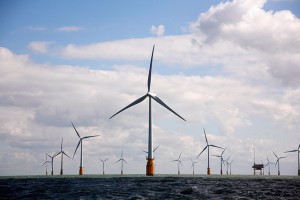Front Porch Blog

Virginia may not be a renewable energy leader anytime soon, but the commonwealth is coming closer to embracing industries that will yield economic and environmental benefits.
The call for action on climate change has grown louder in the weeks following the announcement of the Obama administration’s climate action plan. As the president laid out in June, the plan that leads to a more sustainable energy policy, and as the newly confirmed administrator of the U.S. Environmental Protection Agency, Gina McCarthy, reminded us this week, it is also an incredible opportunity for job creation.
In Charlottesville, Va., last week, Vice Mayor Kristin Szakos and City Councilwoman Dede Smith spoke about climate change at a press conference that was organized by Environment Virginia. The speakers highlighted the need to reduce carbon emissions by investing in energy efficiency and renewable energy, while removing support and subsidies for dirty energy sources.
A few days later, a group of supporters met at Charlottesville’s free speech wall to spread the word about climate change. Organizers scheduled the event to take place as local residents Joanie Freeman and Dave Redding completed the “March for our Grandchildren.” That trek from Camp David to the White House was organized by the national advocacy group 350.org to draw attention to climate change inaction and the problems we that will be left for future generations.
There is a growing chorus of individuals and groups who understand we are not doing enough to curb carbon emissions. Along with this coalition, Charlottesville recently saw the formation of a central Virginia 350 chapter, which brings together regional environmental groups and local residents to plan and take action on climate change in Virginia.
Grassroots movements often build and harness enough power to move industries and politicians on important issues. And recently, public pressure has been critical in leading Dominion to begin rolling out solar programs, albeit on a very small scale. These are encouraging signals of progress, but there is further evidence that Virginia is approaching a renewable energy tipping point.
In the past several months, at least three collaborative working groups have set out to address policies that impede growth of the solar industry in Virginia. One group is comprised of renewable energy industry advocates and Virginia environmental groups. Another includes industry advocates, utilities, regulators, elected officials and environmental groups. And a third collaborative is comprised of local government leaders.
These groups represent a huge population of stakeholders that want the industry to grow in Virginia as it has in states like Maryland, New Jersey and North Carolina.
Solar progress is not the only clean energy technology that is gaining traction in the traditionally slow-moving Virginia. Last week, the Bureau of Ocean Energy Management announced the competitive lease sale of more than 112,000 acres for offshore wind energy development. BOEM estimates the finished project will be capable of producing more than 2,000 megawatts of power from the steady winds 20 miles off of Virginia’s coastline.
While we do not expect Virginia to be a renewable energy leader anytime in the near future, it is edging ever to embracing an industry flush with job opportunities and environmental benefits.
PREVIOUS
NEXT
Related News

Leave a comment
Your email address will not be published. Required fields are marked *
